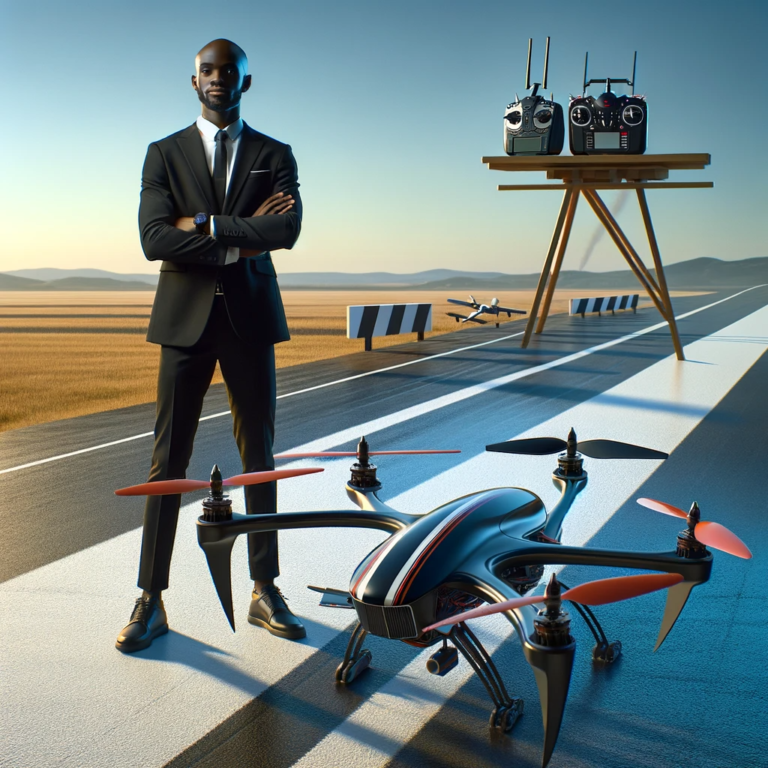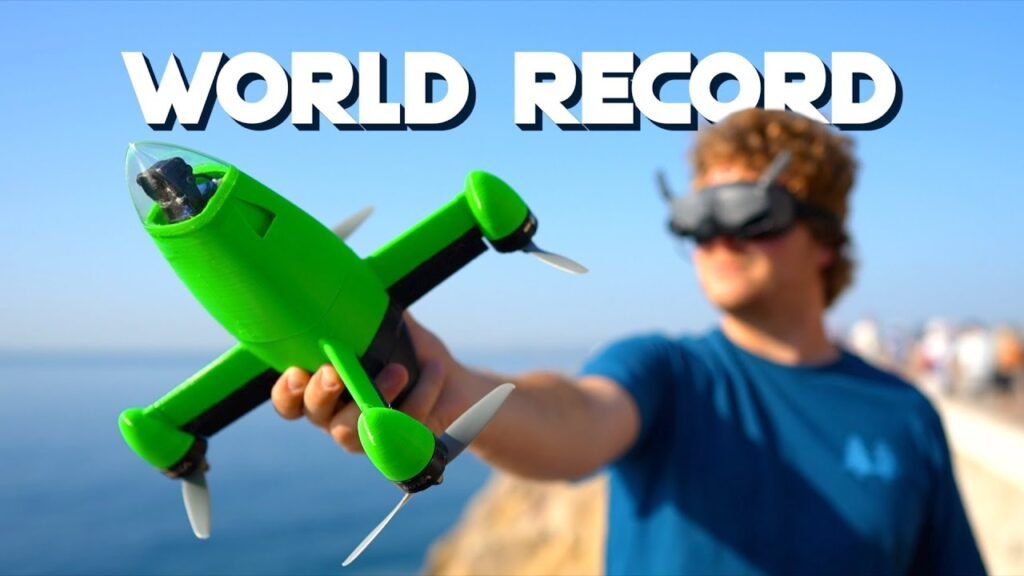
In the video “How I Built the FASTEST Drone in the World” by Luke Maximo Bell, he takes you on a journey through the process of building a record-breaking drone. With the goal of breaking the current world record for the fastest drone, Luke showcases his journey from the first prototype to the final successful runs. Throughout the video, Luke expresses his gratitude to his dad, Mike Bell, for his support and design expertise, as well as to Darren Smith and Hloni Coleman for their help with drone tuning and filming. The video captures the excitement and challenges of building the fastest drone and the satisfaction of achieving recorded top speeds of 401 km/h and an average recorded speed of 397 km/h.

This image is property of i.ytimg.com.
Building the Prototypes
Modifying an iFlight frame for the first prototype
To begin the journey towards building the fastest drone in the world, you started by modifying an iFlight frame for the first prototype. This initial prototype was rough around the edges, but it had all the necessary components to fly. By vertically mounting the battery and making some alterations to the front and back of the frame, you were able to create a functional drone.
First test flight and its speed
With the first prototype completed, it was time to take it out for a test flight. You found a suitable location with non-restricted airspace in France and launched the drone. During this first test flight, the drone reached a peak speed of 218 km/h. While this was a good start, it was still far from the record-breaking speed you were aiming for.
Designing a sleeker version two
After analyzing the results of the first test flight, you realized that modifications were necessary to increase the drone’s speed. So, you embarked on designing a sleeker version two of the drone. This version was more compact and had a reduced frontal area. It was a well-put-together drone that looked promising.
Overheating and melting of motors in version two
Despite the improvements in version two, there were still some challenges to overcome. The motors of the drone overheated and melted, causing it to crash. It was a setback, but you learned from this experience and understood the importance of properly matching the power requirements of the drone’s components.
Overview of current Guinness World Record for fastest drone
Before proceeding with the development of version three, you took a moment to acknowledge the current Guinness World Record for the fastest drone. The record stood at 224 mph or 360 km/h, achieved by Ryan Lademann. Seeing the sleek and aerodynamic design of Lademann’s drone inspired you as you aimed to beat his record.
Designing a more powerful and aerodynamic version three
With determination to break the existing world record, you set out to design version three of the drone. Your approach differed from Lademann’s as you prioritized power and didn’t solely focus on weight reduction. This new version of the drone was designed to be even more powerful and aerodynamic, with components that could handle higher speeds.
Introducing the 3D-printed body for the drone
One of the exciting aspects of version three was the addition of a 3D-printed body for the drone. With the help of your father, who contributed to the design, you successfully 3D printed all the necessary parts. The body featured a unique design inspired by the peregrine falcon, the fastest animal in the world. This 3D-printed body added another level of customization and aesthetics to the drone.
World Record Attempt
Crash during the first world record attempt
With version three of the drone complete, it was time to make a world record attempt. However, during the initial attempt, the drone crashed. It was a disappointing moment, but you remained determined to rebuild and try again.
Rebuilding the drone for a new attempt
After the crash, you gathered yourself and focused on rebuilding the drone for another world record attempt. Having learned from previous experiences, you made sure to address any issues and fine-tune the drone to ensure its stability and performance.
Breaking the previous record with an average speed of 397 km/h
The second world record attempt proved to be a success. The drone achieved an average speed of 397 km/h over a distance of 100 meters in opposite directions. This incredible feat surpassed the previous record of 360 km/h, setting a new mark for the fastest drone in the world.
Footage of the high-speed flights using Insta360 GO 3 camera
To capture the thrilling moments of the high-speed flights, you used an Insta360 GO 3 camera mounted on the drone. This camera provided stunning footage, allowing viewers to experience the exhilaration of flying at such incredible speeds.
Acknowledgements
Thanking Mike Bell for designing the frame and providing support
Throughout the entire project, you received invaluable support from your father, Mike Bell. He not only designed the frame for the drone but also supported you every step of the way. His contributions were instrumental in the success of building the fastest drone.
Darren Smith’s contribution to drone tuning
Darren Smith played a vital role in the tuning of the drone. With his expertise in flying drones, he helped fine-tune the drone to achieve maximum performance. His contribution ensured that the drone was optimized for speed and stability.
Hloni Coleman’s assistance in filming
Hloni Coleman provided crucial assistance in capturing the world record attempts on camera. His filming skills ensured that every thrilling moment was documented, allowing viewers to witness the speed and precision of the drone.
Worcester Gliding Club’s support for the record attempt
To conduct the world record attempt, you received support from the Worcester Gliding Club. They granted permission for the attempt to take place on their grounds, providing a safe and suitable location for the record-breaking flights.
Inspiration and assistance from Ryan Lademann’s previous record and GPS speed analyzer code
Ryan Lademann’s previous record and his GPS speed analyzer code served as both inspiration and a valuable resource for your project. His achievements motivated you to break the record and his code proved immensely helpful in analyzing and optimizing your drone’s performance.
Conclusion
Achieving the goal of building the fastest drone in the world was no easy task, but your determination and passion drove you to success. The recorded top speed of 401 km/h and the average speed of 397 km/h over 100 meters put you on the cusp of breaking the Guinness World Record.
The official record is still pending verification by Guinness World Records. The thrilling journey of building the fastest drone showcased the power of remote-controlled devices and innovation. With the support of Insta360 and the contributions from your team, friends, and family, you accomplished a remarkable feat.
As you eagerly await the official certification from Guinness World Records, this successful project marks a milestone in your journey and sets the stage for new possibilities and future innovations in the world of technology.